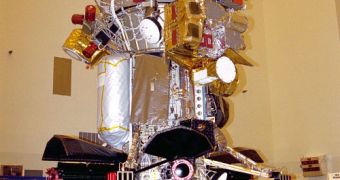Using data sent back by the NASA Cassini spacecraft, researchers determined that the energy output of Saturn has been constantly diminishing between 2005 and 2009. Astronomers compare the event to witnessing a cosmic light bulb being turned off with a dimmer switch.
But the datasets the probe sent back also showed other interesting features on the gas giant. For example, while energy levels have been decreasing, the southern hemisphere of the planet has been constantly releasing more energy than the northern one.
To make matters even more interesting, the team behind the new investigation also determined that energy output was different from the 1980s, when another NASA spacecraft visited that region of the solar system.
Fluctuations were also noticed to take place as seasons changed on the planet. The trends were only noticed after researchers did an extensive survey of data collected by the Composite Infrared Spectrometer (CIRS) on Cassini.
The remote sensing instrument operated in infrared wavelengths, detecting radiation emitted by the gas giant, its moons, and its rings. This helps experts determine the temperatures, thermal properties, and compositions of whatever targets they are analyzing.
The instrument was developed at the Greenbelt, Maryland-based Goddard Space Flight Center. The data it collected was cross-referenced with those obtained with the Voyager spacecraft.
According to experts, this line of studies could give them a lot more insight into whatever power source Saturn has. A large number of mysteries related to the planet could thus be solved, Science Blog reports.
“In planetary science, we tend to think of planets as losing power evenly in all directions and at a steady rate. Now we know Saturn is not doing that,” explains Cornell University scientist Liming Li, the leader of the new study.
Details of the new investigation were published in the November 9 in the esteemed scientific Journal of Geophysical Research-Planets. Experts from the GSFC and the NASA Jet Propulsion Laboratory (JPL) in Pasadena California, were also involved in the work.
“The Cassini CIRS data are very valuable because they give us a nearly complete picture of Saturn. This is the only single data set that provides so much information about this planet, and it’s the first time that anybody has been able to study the power emitted by one of the giant planets in such detail,” Li explains.
“It’s reasonable to think that the changes in Saturn’s emitted power are related to cloud cover. As the amount of cloud cover changes, the amount of radiation escaping into space also changes,” adds expert Amy Simon-Miller.
She is the leader of the GSFC Planetary Systems Laboratory, and also a coauthor of the new paper. “This might vary during a single season and from one Saturn year to another,” she adds.
“But to fully understand what is happening on Saturn, we will need the other half of the picture: the amount of power being absorbed by the planet,” Simon-Miller concludes.

 14 DAY TRIAL //
14 DAY TRIAL //